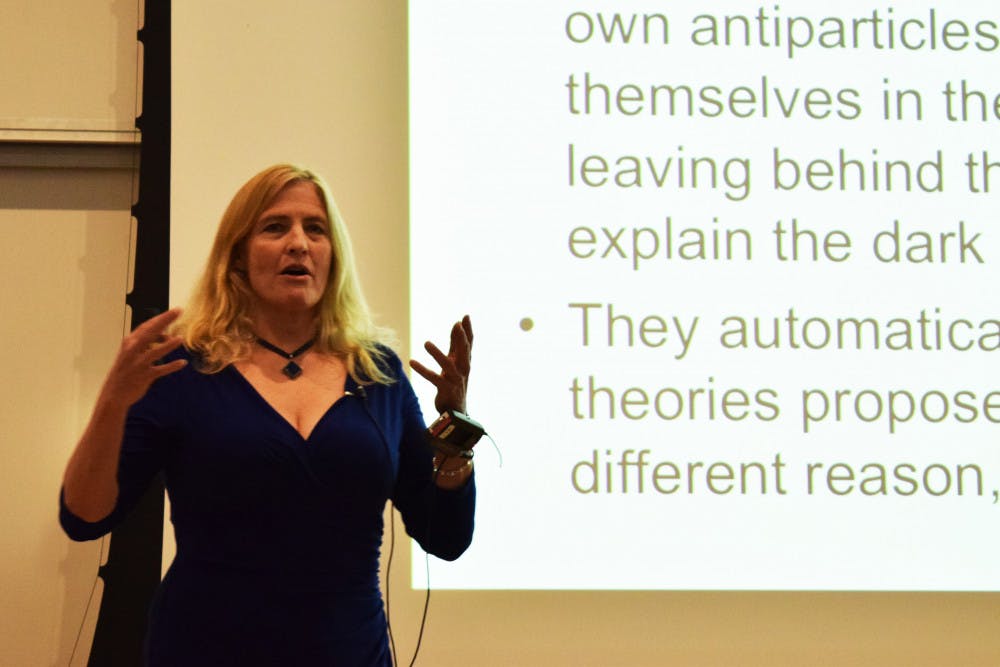Katherine Freese, professor of physics at the University of Michigan, described the state of research on dark matter in her lecture “The Dark Side of the Universe” Friday evening. She outlined the history of scientific inquiry into dark matter, starting with Einstein’s general theory of relativity and the Big Bang before progressing to ongoing research around the world.
“Starting a hundred years ago with the work of Albert Einstein, we have a creation myth,” Freese said. “And guess what? It’s right.”
Pointing out misconceptions about physics and space as she went along, Freese distilled physics concepts to their simplest essences. She presented the components of our universe like ingredients in a recipe: 69 percent dark energy, 26 percent dark matter and 5 percent ordinary matter.
“I didn’t know anything about the subject going into it,” said Emily Siff ’19. “She did a good job of going over the basics but not in a way that was so expansive that she lost track of her own research.”
The lecture went on to address the question of what particles make up the dark matter that constitutes so much of our universe. Freese characterized the different suspects, including massive compact halo objects, or MACHOs — a category that includes faint stars, stellar remnants and white dwarfs. But she focused on the concept of weakly interacting massive particles, or WIMPs, which have procured the attention of many research labs worldwide.
“There was a battle between the MACHOs and the WIMPs,” Freese said. But now, many researchers are focused on WIMP detection, using different tactics to find evidence of their role in the universe. “We need compatible signals in different experiments with different materials to know what dark matter is,” Freese said.
From the coining of the term “dunkle matiere” to the progress of underground WIMP detectors, Freese noted the major contributions to the continuing study of dark matter. Her book, “The Cosmic Cocktail: Three Parts Dark Matter,” takes a similar approach to the history of dark matter research, painting a colorful portrait of the field from the inside.
As one of the first women to major in physics at Princeton, Freese also spoke about being a woman in science, a dynamic that attracted some audience members. “I came here because I’m in the physics department, and I want to be an astrophysicist,” Marlene Ortega ’18 said. “I wanted to be a little bit inspired by a woman speaker.”
In response to a request for advice from a female student in the audience, Freese suggested finding a “supportive, powerful advisor” and resisting feelings of inadequacy. “It’s easy to convince yourself, ‘I’m not that good,’” she said. “We all feel that.”





